We took a 1990’s guide to Â鶹´«Ă˝Ół»sightseeing so we could get a sense of how much the city has changed. Follow this disjointed adventure as it unfolds, or learn more about the series
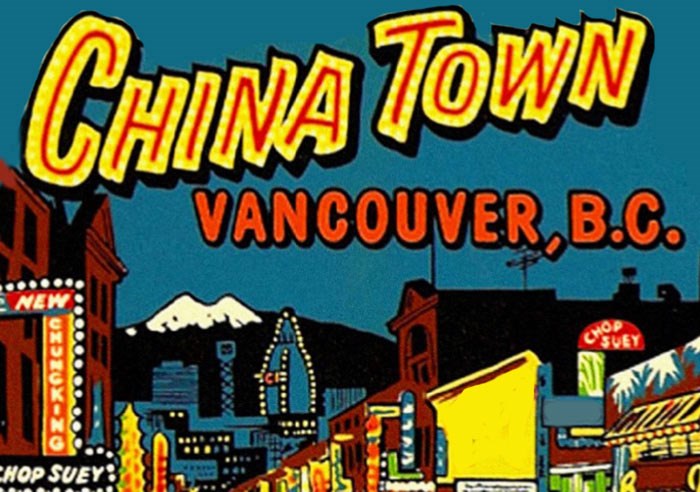
DTES & Chinatown
Before we can get to Chinatown, we’ll have to cross Hastings Street. I only mention it as a challenge because night has fallen, and my guide seems gripped with warning as we approach the divide between us and dinner. Our entire journey has been peppered with little comments about “seedy” characters and “rough” neighbourhoods, but the Downtown East Side is never directly referenced.
“Hastings Street on either side of Main Street is a less-than-wholesome part of town, especially at night,” it says as I cross Hastings at Carrall, warmed by the happy hour Guinness we just downed in .
I get it, this is tourism, where most people are looking for an escape from reality, not a means to take it head on. But this is also time travel, and with hindsight on my side, I think theĚýguide could have done a better job of contextualizing the drugs, crime, mental illness, poverty, and homelessness that’s all part of the Downtown East Side with the vibrancy, history, and sense of community that’s also at play here. To my guide, the DTES doesn’t exist. Every establishment it mentions is conveniently blended into Gastown and Chinatown.
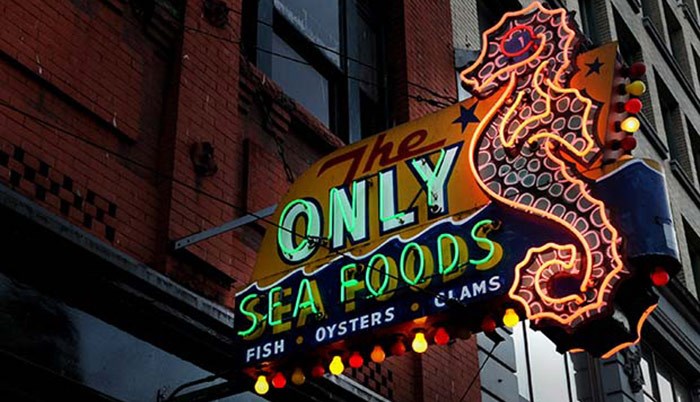
Rather than traverse Hastings quickly, we stroll slowly towards Columbia Street, and pass the spot where The Only Seafoods used to hang its neon seahorse. My guide’s description of Only’s clam chowder, the Â鶹´«Ă˝Ół»Police Centennial Museum’s quirkiness, and the Patricia Hotel’s clean, affordable rooms are the only places in what we now call the DTES mentioned with any enthusiasm. Bodai Vegetarian Restaurant’s simulated meat dishes at 337 E. Hastings, Pho Day’s $3 specials at 333 E. Hastings, and Pho Pasteur’s all-night hours at the corner of Gore and Hastings get a more utilitarian treatment, describing simple dishes at fair prices. Today, they’re just memories that have given way to a neighbourhood in transition, where the affordable rent is becoming too tantalizing to ignore any longer. New owners have taken over the Ovaltine Cafe, extended its hours, improved the food quality, and seem to have embraced a sensitivity interested in being part of the community here, instead of being contrary to it. In an ironic twist, aĚýTexas BBQ, with a smoker brought straight from Austin, is set to open where Bodai Vegetarian used to operate.
Once we land on Pender Street and walk into Chinatown, my guide loosens up a bit and gets back to its life’s work: trying to find authentic and unique experiences for those that have the opportunity to seek them, but it’s proving difficult. It has no idea about Chinatown’s recent adoption by the creative class, where places it would likely salivate over are in abundance today. ItĚýwould love Bao Bei’s pairing of contemporary cocktails with traditional Chinese cafe fair; µţ±đ˛őłŮľ±±đ’s craft beer, ethically sourced bratwurst and Bauhaus-inspired interior; the taxidermied walls at Mamie Taylor’s; the den-like opulence of the Emerald, and simplicity of Oyster Express on Gore. But this is the 90s, and back then people seemed to be leaving Chinatown instead of setting up shop.
“For the most part, this is a real Chinese market and business district, where nearly all the signs are in Chinese. For years the area has contended with the run-down blights of Hastings and Main Streets which is finally taking its toll,” my guide says, describing how many Chinatown residents moved their businesses to Richmond throughout the 90s.
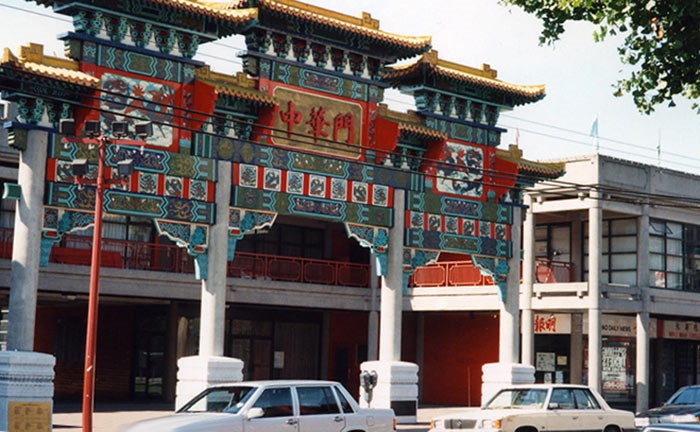
While my guide and I stand on the cold corner of Columbia and Pender, where Foo’s Ho Ho has been replaced with a globally-inspired dining room called Sai Woo, I need to pause our story for a second to communicate the gravity of this moment. What follows will be my guide’s last suggestion. I’ve mentioned it adnauseum, so you should know by now that since we started this adventure together, I had always planned on burning the book on Sunset Beach to keep warm after dinner. If you don’t know what it’s like to feel unwanted, undoubtedly, one day you will. I can’t put my book, my companion in time travel, my guide, my friend, back on a shelf where it willĚýsit in uselessness for the rest of time. So consider this upcoming dining suggestion as its last gift to us all.
“New Town Bakery & Restaurant has dishes for $8,” my guide says.
“Good! But closed for the night.”
Not to be deterred, it tries again. “A local favourite, the Park Lock, specializes in great seafood dishes. Don’t let the modest street level entry put you off.”
“No longer with us.”
“For Cambodian cuisine, go to Phnom Penh where you can expect to pay around $12 for most dishes.”
“Oh come on,” I say, getting cold and impatient, “Phnom Pen is great, but it’s in every guidebook known to mankind. You can do better.”
Then, something magical happens. Two simple words are uttered from the pages of my guide: Gain Wah. I feel aĚýsensation that instantly replaces the cold, hunger, and dread of having to kill it after dinner with something else. It is the precious essence of joy. It has transcended time, arriving hereĚýfromĚýthe 90s in the form of a restaurant in Chinatown I used to frequent many years ago because it was the only thing in the area open pastĚý10pm. In its last moments, the guide has done well. Gain Wah is the ultimate dinner suggestion.
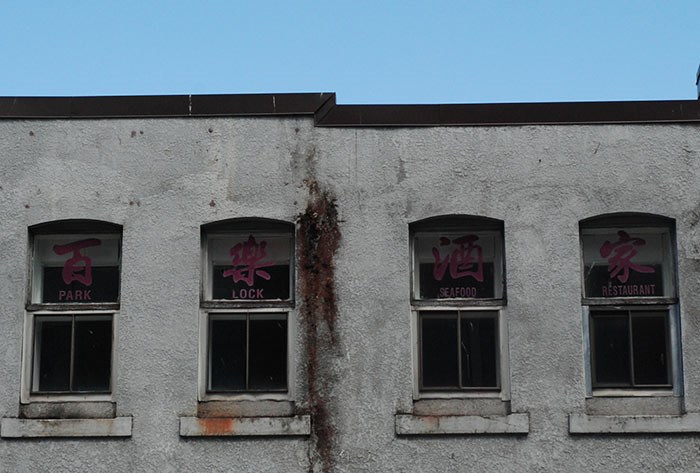 Park Lock sits vacant at Keefer and Main. According to the guide, It was a dining favourite. Photo: Amanda Rose
Park Lock sits vacant at Keefer and Main. According to the guide, It was a dining favourite. Photo: Amanda Rose
Cut to the guide and I bounding up Pender, towards Keefer where hopes that Gain Wah is still tucked safely behind Main are in peril. TheĚý2nd floor bombed-out looking windows of Park Lock on Main Street, just before Keefer, have us both reeling in fear that the guide's last gesture will be in vain. Then we round the corner, and for what seems like the first time since we started, find exactly what the guide said would be there.
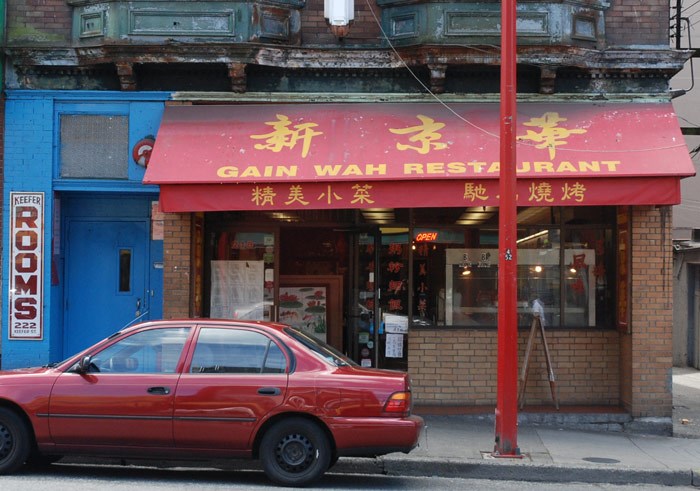 While Chinatown evolves, Gain Wah stands still. Photo: Amanda Rose
While Chinatown evolves, Gain Wah stands still. Photo: Amanda Rose
“Gain Wah has 16 varieties of congee (a rice or noodle soup loaded with goodies) starting at $4,” my guide says as we step into its familiarity. The restaurant isĚýexactly as it was the last time I was here. The same guy, standing at the entrance, chopping BBQ pork and duck with a meat cleaver; the same woman working the tables, many of which are empty, surrounded by the same brown vinyl chairs. The hand written signs, the non-existent music, the stack of newspapers by the till, the people eating here in quiet solitude — EVERYTHING THE SAME. As our waitress approaches, I mention with excitement that I haven’t been here in 7 years, and that nothing has changed since. She smiles.
My agenda to engage with people about what’s transpired at Gain Wah since the 90s, or the new condo called “The Keefer” they’re building down the street, seems ridiculous here. There is nothing "cool” about this place. No pre-canned urban house music, no inspirational cocktails, organic wines, craft beers, local this, ethical that. Just a hard working couple, cooking the same food they were likely served as children for a clientele of other hard working people that need affordable food.
Rather than mine the past, the guide and I just sit for a long time over a half litre of unnamed house wine, Gai Lan in oyster sauce, fried rice, and BBQ pork chopped by the guy with the meat cleaver. The changing tides of trend have no bearing here. While I’m paying my bill, I realize that anything thisĚýguide could say would be appreciated as long as it was saidĚýwithin these walls, because in Gain Wah, time means nothing. Instead of destroying my guide, I discreetly slip it under aĚýpile of other dated reading materials by the front entrance, silently say goodbye, and walk out the door, into the night, alone.
The guide lives! But what about our writer? What's he going to do now? FindĚýout onĚýSunset Beach,ĚýwhenĚýGuided by the 90s concludes next week.Ěý


